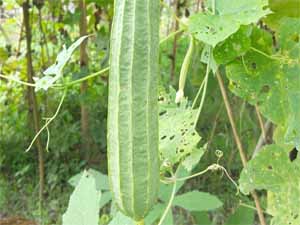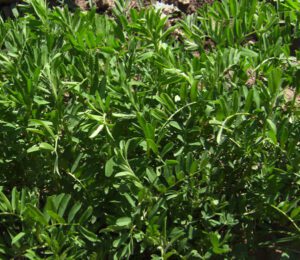Commercial radish farming is a very common and popular business in many countries around the world. Radish is a very important crop and grown in almost everywhere around the globe.
Radishes are actually consumed throughout the world. And it is mostly eaten raw as a crunchy salad vegetable with a pungent flavor.
Radishes owe their sharp flavor to the various chemical compounds produced by the plants including glucosinolate, myrosinase and isothiocyanate.
Radish (Paphanus raphanistrum) is actually an edible root vegetable which belongs to family of ‘Brassicaceae’ and it was domesticated in Asia prior to Roman Times.[1]
It is actually a crop of tropical and temperate region, but grow almost everywhere. Radish is a quick growing annual or biannual herb, and it’s edible roots are having different color from white to red.
Total annual production (using 2003-2004 data) of radishes to be about 7 million tonnes (roughly 2% of global vegetable production). Major radishes producing countries were China, Japan and South Korea.
Nutritional Value of Radish
Radish is very nutritious. A raw radish is 1% protein, 3% carbohydrates, 95% water and has negligible fat.
In a 100 grams reference serving, raw radishes provide 66 kilojoules (16 kilocalories) of food energy and have a moderate amount of vitamin C (18% of Daily Value), with other essential nutrients in low content
Health Benefits of Radish
As you can see from above, radishes are very nutritious and very good for human health. Here we are trying to describe about some top health benefits of consuming radishes.
- Radishes are a good source of vitamin C which is an antioxidant that helps to battle free radicals in your body and helps to prevent cell damage caused by aging, and unhealthy lifestyle and environmental toxins.
- Radishes contain small amounts of folate, niacin, riboflavin, potassium, vitamin K, vitamin B-6, sodium, calcium, zinc, magnesium, copper, manganese and phosphorous.
- According to some studies, eating cruciferous vegetables like radishes may help to prevent cancer.
- Radishes are great source of fiber. So consuming radishes can support a healthy digestive system.
- Radishes are a natural antifungal. They contain the antifungul protein RsAFP2.
- Radishes are good source of natural nitrates that improve blood flow.
- Regular consumption of radishes can help to reduce zen effects.
- Radishes contain some chemical compounds like glucosinolate and isothiocyanate that can help to regulate blood sugar levels and may reduce risk for diabetes.
- Along with other compounds, radishes contain indole-3-carbinol and 4-methylthio-3-butenyl-isothiocyanate, which help the liver detoxify and heal against damage. And these compounds can also help the kidneys flush out toxins.
- Radishes are pretty rich in antioxidants and minerals like calcium and potassium. Together, these nutrients help to lower high blood pressure and reduce the risks for heart disease.
Advantages/Benefits of Radish Farming Business
Commercial radish farming is a very easy and popular business. Growing radish is extremely easy and the beginners can also start this business.
Commercial radish farming is becoming popular gradually in many countries around the world. Here we are trying to describe the top advantages of radish farming business.
- Commercial radish farming is a very old business and may people are already doing this business.
- It’s very easy to make good profits from commercial radish farming business, and many people are already doing this business.
- You don’t have to worry much about starting and operating this business, because it is already an established business.
- Growing radishes is very easy and simple. And the plants are very strong and hardy. They generally require less caring and other management.
- Capital requirements are relatively low as compared to other fruit or crop farming business.
- You will get back your invested money within a very short period of time.
- Both demand and value of radishes are good.
- You will be able to make good profits if you can produce radishes earlier in the season.
- Commercial radish farming can be a good business for the educated but unemployed people.
- Radishes are nutritious and has numerous health benefits. And you can enjoy fresh radishes if you start your own production.
How to Start Radish Farming Business
Starting commercial radish farming is very easy and simple just like starting other crop farming business. It’s very easy and the beginners can also start this business with relatively less investment.

Although, having practical experience is very good for commercial production of radishes. Here we are trying to describe more about starting and operating a profitable radish farming business.
Site Selection
Radishes can be grown on all types of soils. But these plants grow best and produce more when they are grown on light friable, sandy loam soil.
Try to avoid heavy or compact soils. Because heavy soils produce rough, malformed roots. Ideal pH of the soil for good growth of radishes is between 5.5 and 6.8.
Land Preparation
Soils should be plowed to a depth of 30-40 cm to provide fine tilth. The soil for radish is thoroughly prepared so that there are no clods to interfere with root development.
For good growth of the plants, the soil should not contain any undecomposed organic matter (because that may result in forking of roots or misshapen roots.
Till the soil to a depth of 6 to 8 inches to make it lose and more suitable for growing radish. And then add a layer of farmyard manure or garden compost to enrich it with organic matter.
Climate Requirement
Radish is actually a cool season crop, but the Asiatic varieties can resist more heat than the European or temperate varieties. But radish attains best flavor, texture and size at 10°C to 15°C.
Long days and high temperature, lead to bolting without adequate root formation. During the hot weather, the root becomes tough and pungent before reaching the edible size and therefore, the crop should be harvested while young and small in size.
Varieties/Cultivars
There are numerous varieties of radishes available throughout the world which vary in size, color, flavor and length of time required for growing.
Radishes varieties can be categorized into 4 main types depending on the seasons when they are grown (also depending on colors and sizes).
These 4 types of radishes are winter radishes, spring or summer radishes, round or elongated radishes and seed pod radishes.
Within these 4 types some most popular radish varieties are Butpee White, Champions, Cherry Belle, Daikon, Dragon’s Tail, French Breakfast, Misato Rose, Rat’s Tail, Red King and Watermelon radish.
You should choose the right radish variety for your business depending on it’s performance in your area. You can consult with your local farmers for more information.
Purchase Seeds
Radishes are grown from seeds. You can purchase the seeds from any of your nearest nurseries or seed supply stores. You can also consider ordering the seeds online.
Planting
Planting radishes is very easy and simple. They are generally grown on ridges to facilitate good root production. Radish is grown, as a single crop or as a companion crop.
The plant rows or ridges about 22 cm high are kept about 45cm apart, whereas the plants within the rows are kept 8cm apart.
The European or temperate types can be sown 20cm to 30cm apart, as they need closer spacing. Generally, the seed sowing is done 1.15cm deep.
Planting Season
Radishes are best grown in winter season. Radishes will be very tasty and flavorful if you grow them in winter season.
Spacing
25cm to 30cm between rows, and 10cm between plants.
Caring
Caring the radish plants is very easy and simple. Here we are trying to describe more information about caring the radish plants.
Fertilizing
Add as much organic fertilizer as you can while preparing the soil with well decomposed cowdung.
And then apply urea at the rate of of 55 kg per acre, SSP at the rate of 75 kg per acre during the time of sowing.
Watering/Irrigation
Apply first irrigation immediately after sowing seeds, it will help in good germination of the seeds. Apply remaining irrigation at interval of 6-7 days in summer and 10-12 days interval in winter month depending upon soil type and climate.
Mulching
Mulching is very important for retaining moisture into the soil, and it will also help to prevent weeds from the field. Use organic materials for using as mulching.
Weeding
Weeds consume nutrients from the soil and the cultivated crop suffer. Perform weeding and hoeing for keeping check on weed growth (also for preventing soil aeration).
Take one weeding operation, two or three weeks after sowing. After weeding, carryout earthing operation.
Pests & Diseases of Radishes
Like many other commercial crops, radishes are also susceptible to some pests and diseases. Here we are trying to describe more information about common pests and diseases of radishes.
Diseases & Their Control
Alternaria blight is the common disease of the radish plants. Slightly raised, yellow spots are observed on leaves. Infection is rapidly spread in rainy season. Spraying of Mancozeb at the rate of 2 grams per litter of water or Carbendazim at the rate of 1 gram per liter of water should be done to control this disease.
Flea beetles and mustard saw fly is another common disease of the radish plants. If you notice the infestation is observed in field, spraying of Malathion 50EC at the rate of 1m per litter of water will be effective. Repeat spray for 2-3 times at interval of 10 days.
Pests & Their Control
Aphid is the most serious pest of Radish. If infestation is observed, spraying of Malathion 50 EC at the rate 1 ml per litter of water will be effective. Repeat spray for 2-3 times at interval of 10 days.
Harvesting
Depending upon variety, radish become ready for harvesting within 25 to 60 days after sowing. Harvesting is done manually by uprooting plants. Then the harvested roots are washed and then garden upon size.
Post-Harvesting
Radishes are sold depending upon their size. So, after harvesting grading according to their size is done.
Yield
The European or temperate varieties produce 8 to 10 tons roots per hectare within 25 to 30 days. But the Asiatic improved radish varieties produce between 15 to 25 tons roots per hectare within 40 to 60 days.
Marketing
Marketing radishes is very easy and simple. You can easily sell your products in your local market.
These are the common ways and steps for radish farming. Hope this guide has helped you! Good luck & may God bless you!







Is it possible to grow radish during rainy months?
Some short varieties available which grows well during rainy months. Good luck!